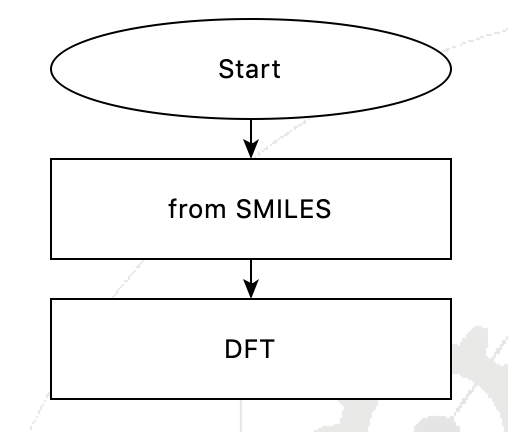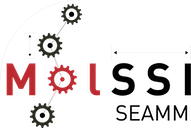Flowchart#
A flowchart is a key concept in SEAMM to represent a workflow. Because SEAMM is designed to host a wide variety of computational molecular and materials science simulation engines, flowcharts are designed in a way that can handle a variety of subjects and tasks within each step. An example of a very simple workflow might involve the creation of a chemical structure from SMILES and its optimization using DFT or any other advanced quantum chemical method. The aforementioned simple two-step flowchart would look like the following:

A Simple Flowchart#
Of course, due to the flexibility of the flowcharts, they can handle much more complicated workflows. In the simple case illustrated above, a non-physical initial geometry can lead to the numerical divergence of the iterative DFT calculation. A more complex workflow can be designed to be able to catch this error or pre-optimize the geometry at a lower level before preforming the final DFT optimization step.
The flowcharts in SEAMM can be converted to plain text – a process known as serialization. Serialization allows SEAMM to store the flowcharts in the job datastore and ship them to users. As such, flowcharts can be stored (as a text file), modified, or shared with a colleague so they can use them in their own research workflow(s).

